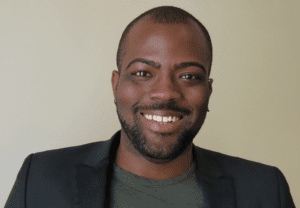64 Years After Brown v. Board of Education, Integration Has Not Helped Black People
Preston Mitchum, The Root, May 17, 2018
{snip}
Still, while celebrating this important legal victory, it’s also important to ask: Has integrating public facilities made lives better for black people in the United States? The unfortunate answer is “no.”
Another question would be: Have public schools really, truly been integrated? The answer to that is “not really.”
{snip}
Sometimes that resistance was violent, and many other times, it was covert like redrawing congressional districts, gutting critical information from textbooks, creating new budgetary line items and erasing others. After integration, particularly in public schools, black people saw an uptick of racism.
Additionally, white parents have always found ways around the Brown ruling. This is particularly evident when they gentrify working-class communities of color, but send their children to private or charter schools with racially biased admission practices. New York City, for instance, boasts one of the most segregated public school systems in the nation, with Mayor Bill de Blasio placing the blame on “historical housing patterns” in the city.
{snip}
If one wants to test how progressive white people truly are, tell them that their precious children will actually have to share educational space with marginalized black and brown students.
We see similar patterns all across the nation in “urban” school districts, which is code for black, Latino, and working-class for a reason. We also see it in the South, where black students fill underfunded public schools, while wealthy white parents who have opted out of the public school system scream that modernizing buildings and implementing more technology is a waste of money.
{snip}
In truth, the entire charter school experiment is rooted in white supremacy and class hierarchy; it has proved to be nothing but a Trojan horse for segregation and has helped to erode any alleged Brown v. Board gains.
Not that so-called integration has been any better for black Americans.
In the 1950s and 1960s, many black Americans made their way through the court systems to constitutionally challenge racial discrimination. While the federal government began to address centuries of racial injustice in legal battles, the U.S. Congress also started to slowly address the realities of racism legislatively.
{snip} The Civil Rights Act banned discrimination in public facilities and employment and the Voting Rights Act, enacted a year later, barred practices aimed at disenfranchising black voters.
While these laws were passed a decade after Brown v. Board, they are critical in understanding the hostile climate facing black people in the United States and addressing why pushing toward integration seemed like the viable solution to ending white supremacy.
It was not.
These court cases and legislative victories only served to minimize de jure discrimination (legal segregation of groups enforced by law; e.g., Jim Crow laws enforcing discrimination in public facilities such as schools and transportation) and did very little to stop de facto discrimination (legal racial segregation, especially in public schools, that happens “by fact” rather than by legal requirement; e.g., a high percentage of black people living in one neighborhood producing a majority-black school).
In short, black people rightfully desired equitable public institutions — like schools — and wanted to make lives better for themselves and their families. For many, this meant packing their bags and moving into suburban communities, areas usually populated by white people.
Like today, there was a belief that if black people moved into white-majority neighborhoods or school districts (which later led to “white flight”), we’d finally obtained a piece of the pie and were no longer part of a lower class. Respectability politics caused us to assume we would be more accepted, and we were wrong.
{snip}
The prevailing narrative is that school integration is not only ideal, but is an essential means to creating equal opportunity for all children. Though not specifically said, what’s meant is that for black children to succeed, they need to go into better and more-white neighborhoods because success is usually linked to whiteness.
{snip}
Yes, integration was supposed to make us look at communities more holistically and get a bigger picture of how we can interact together, but my grandmother always said, “Integration was one of the worst things that happened to black people.”
It has meant letting go of safe spaces for marginalized and systematically disenfranchised communities and forced us to acquiescence to dominant groups — in this case, white America. It has led to the denial of spaces that are exclusively black, and, though attempting to create a better educational environment for black students, integration oftentimes makes it more hostile and is counterproductive to black people’s academic success.
My grandmother shared horror stories about how she and her peers were treated by their white counterparts. We see that, even today, just the thought of integration makes white supremacy rear its ugly head — and makes some black people dilute their own blackness to better assimilate into white spaces, and to hopefully remain safe within them.
But that safety is a lie.
{snip}
Integration isn’t the answer; it has never been the answer, which means we are fighting the wrong evil.
To be sure, many black people thought that “enemies” would teach our children as equally as white children, but integration seemed to increase racism more than erode its white supremacist roots.
{snip}
After all, we can always fight for access to resources without linking that to being around white people and the systems that flow therefrom.

Preston Mitchum















